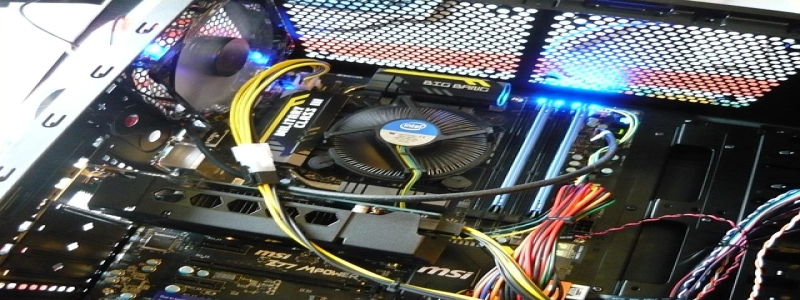400 Gbps Ethernet
1. Introduction
1.1 Definition of 400 Gbps Ethernet
1.2 Need for higher data transmission speeds
2. Evolution of Ethernet
2.1 From 10 Mbps to 400 Gbps
2.2 Release of 400 Gbps Ethernet standard
3. Features and Advantages
3.1 Increased bandwidth
3.2 Reduced latency
3.3 Support for high-performance computing and cloud applications
3.4 Enhanced scalability and flexibility
4. Technical Details
4.1 Physical layer specifications
4.2 Ethernet frame structure
4.3 Forward error correction techniques
4.4 Data encoding methods
5. Deployment and Implementation
5.1 Transition to 400 Gbps Ethernet from existing infrastructures
5.2 Compatibility with existing Ethernet equipment
5.3 Cost considerations
6. Industry Adoption and Future Outlook
6.1 Deployment in data centers and enterprise networks
6.2 Challenges and opportunities for network providers
6.3 Potential for further advancements in Ethernet technology
1. Introduction
1.1 Definition of 400 Gbps Ethernet
400 Gbps Ethernet refers to a networking technology that enables data transmission at a speed of 400 Gigabits per second over Ethernet networks. It is the latest standard in Ethernet technology and offers significantly higher data transmission rates compared to previous iterations.
1.2 Need for higher data transmission speeds
In today’s digital age, the demand for high-speed data transmission has increased exponentially. With the rise of cloud computing, streaming services, and data-intensive applications, traditional Ethernet speeds of 1 Gbps or 10 Gbps are no longer sufficient. The need for faster and more efficient communication networks has led to the development of 400 Gbps Ethernet.
2. Evolution of Ethernet
2.1 From 10 Mbps to 400 Gbps
Ethernet technology has come a long way since its inception in the 1970s. It started with a modest data transmission rate of 10 Mbps and has progressively evolved to support higher speeds of 100 Mbps, 1 Gbps, 10 Gbps, and beyond. Each new generation of Ethernet brought increased bandwidth and improved performance.
2.2 Release of 400 Gbps Ethernet standard
The Institute of Electrical and Electronics Engineers (IEEE) released the 400 Gbps Ethernet standard, IEEE 802.3bs, in 2017. This standard defines the physical and electrical specifications necessary for 400 Gbps Ethernet communication.
3. Features and Advantages
3.1 Increased bandwidth
One of the key advantages of 400 Gbps Ethernet is its significantly increased bandwidth. With four times the capacity of 100 Gbps Ethernet, it allows for the seamless transmission of large volumes of data without bottlenecks or congestion.
3.2 Reduced latency
400 Gbps Ethernet offers lower latency compared to previous Ethernet standards. This is crucial for applications where real-time data transmission is essential, such as financial trading, gaming, and video conferencing.
3.3 Support for high-performance computing and cloud applications
The high-speed and low latency of 400 Gbps Ethernet make it ideal for high-performance computing and cloud-based applications. It enables faster data transfers between servers, allowing for improved performance and responsiveness in data centers and cloud environments.
3.4 Enhanced scalability and flexibility
400 Gbps Ethernet provides enhanced scalability and flexibility for network administrators. It allows for efficient network upgrades and expansions, as well as the ability to support a wide range of devices and applications simultaneously.
4. Technical Details
4.1 Physical layer specifications
The physical layer specifications of 400 Gbps Ethernet include electrical and optical interfaces. It supports both copper and fiber optic cables, offering flexibility in network design and implementation.
4.2 Ethernet frame structure
The Ethernet frame structure in 400 Gbps Ethernet follows the same basic format as previous Ethernet standards. However, it includes additional headers and fields to accommodate the higher data transmission rates.
4.3 Forward error correction techniques
To ensure reliable data transmission, 400 Gbps Ethernet utilizes advanced forward error correction techniques. These techniques allow for the detection and correction of errors that may occur during transmission, minimizing data loss and ensuring data integrity.
4.4 Data encoding methods
Different data encoding methods are employed in 400 Gbps Ethernet to maximize data throughput and minimize errors. These methods include pulse amplitude modulation (PAM-4) and forward error correction encoding.
5. Deployment and Implementation
5.1 Transition to 400 Gbps Ethernet from existing infrastructures
The transition to 400 Gbps Ethernet from existing infrastructures requires careful planning and consideration. Network administrators need to assess their current network architecture and evaluate the feasibility and cost of upgrading to 400 Gbps Ethernet.
5.2 Compatibility with existing Ethernet equipment
In many cases, existing Ethernet equipment can be upgraded to support 400 Gbps Ethernet by replacing network interface cards, switches, and routers. However, compatibility with older equipment may vary, and some network components may need to be replaced.
5.3 Cost considerations
The implementation of 400 Gbps Ethernet involves upfront costs for new equipment and infrastructure upgrades. However, the long-term benefits in terms of increased network capacity and improved performance often outweigh the initial investment.
6. Industry Adoption and Future Outlook
6.1 Deployment in data centers and enterprise networks
The adoption of 400 Gbps Ethernet is gaining momentum in data centers and enterprise networks. These environments can benefit greatly from the increased bandwidth and improved performance offered by this technology.
6.2 Challenges and opportunities for network providers
Network providers face challenges in terms of infrastructure upgrades and meeting the growing demand for higher speeds. However, the deployment of 400 Gbps Ethernet presents opportunities for them to offer more advanced services and cater to the evolving needs of their customers.
6.3 Potential for further advancements in Ethernet technology
The development and deployment of 400 Gbps Ethernet represent a significant advancement in Ethernet technology. As the demand for faster and more reliable networking continues to grow, further advancements in Ethernet technology can be expected, enabling even higher data transmission speeds in the future.








